What is Somatic Yoga? New Approach to Movement
Wondering what is somatic yoga? Uncover its benefits for flexibility, trauma recovery, and how it supports a balanced lifestyle.


What is somatic yoga, and why is it gaining attention? Somatic yoga is a unique blend of mindful movement and body awareness that encourages deeper connections between the mind and body. Rooted in the principles of somatics and the ancient practice of yoga, this approach prioritizes gentle, intentional movements to help release tension and promote overall well-being.
Unlike more intense forms of exercise, somatic yoga focuses on small, slow movements, making it accessible to a wide range of individuals. As more people seek ways to support relaxation and reduce discomfort, somatic yoga has become a favored practice for its ability to enhance physical awareness and support the body’s natural ability to regulate itself.
What is Somatic Yoga?
So, what is somatic yoga? In short, it is a practice that combines the principles of somatics – an approach centered on internal body awareness – with the foundational movements of yoga. Somatics, derived from the Greek word “soma” meaning body, emphasizes the mind-body connection and encourages practitioners to tune in to how their bodies move and feel from within. Unlike traditional yoga, which often focuses on holding postures, somatic yoga prioritizes slow, conscious movements that help retrain the nervous system and release chronic tension.
The practice is designed to promote greater freedom of movement, flexibility, and overall body awareness by encouraging the brain to communicate more effectively with muscles. Rooted in both modern neuroscience and ancient yogic wisdom, somatic yoga works to improve movement patterns and alleviate discomfort by addressing the underlying causes of tension. Through this mindful approach, individuals can reconnect with their bodies and cultivate a sense of calm and ease in daily life.
Somatic Yoga Benefits
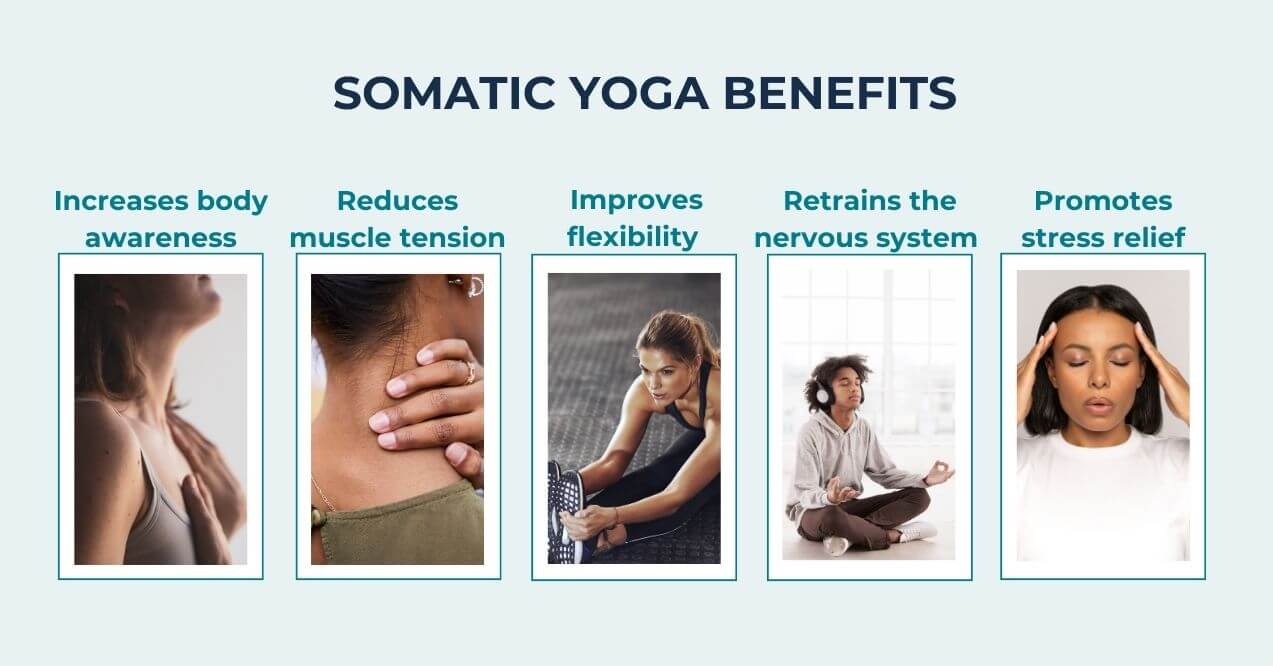
Somatic yoga provides numerous benefits for both the body and mind. Here are some of the key advantages:
- Increases body awareness – By focusing on slow, mindful movements, somatic yoga enhances how we perceive and understand our body’s sensations and movement patterns.
- Reduces muscle tension – Somatic yoga benefits include the ability to release long-held tension in the muscles, improving relaxation and physical comfort.
- Improves flexibility and mobility – The gentle, conscious movements of somatic yoga gradually enhance flexibility and range of motion, making it accessible for people of all fitness levels.
- Retrains the nervous system – This practice helps the brain communicate more effectively with muscles, supporting smoother, more coordinated movements.
- Promotes stress relief – The meditative aspects of somatic yoga promote a calm mind and reduced stress levels, contributing to overall well-being.
How Somatics and Yoga Come Together?
Somatics and yoga complement each other by combining mindful movement with body awareness. Yoga emphasizes physical postures and breathwork, promoting strength, flexibility, and mental calm. Somatics focuses on slow, conscious movements that help retrain the brain’s communication with muscles, addressing habitual tension patterns.
Together, they create a holistic practice where the body is moved with intention, enhancing flexibility while also increasing awareness of internal sensations. This synergy allows practitioners to experience yoga in a more mindful, purposeful way, encouraging deeper relaxation, improved movement patterns, and a greater connection between mind and body.
Our Favorite Somatic Yoga Poses
Certain yoga poses are particularly effective in incorporating somatic principles, helping to enhance body awareness, release tension, and improve movement patterns. Below are some of our favorite somatic yoga poses, designed to support mindful movement and deepen your connection with your body.
1. Supine Twist
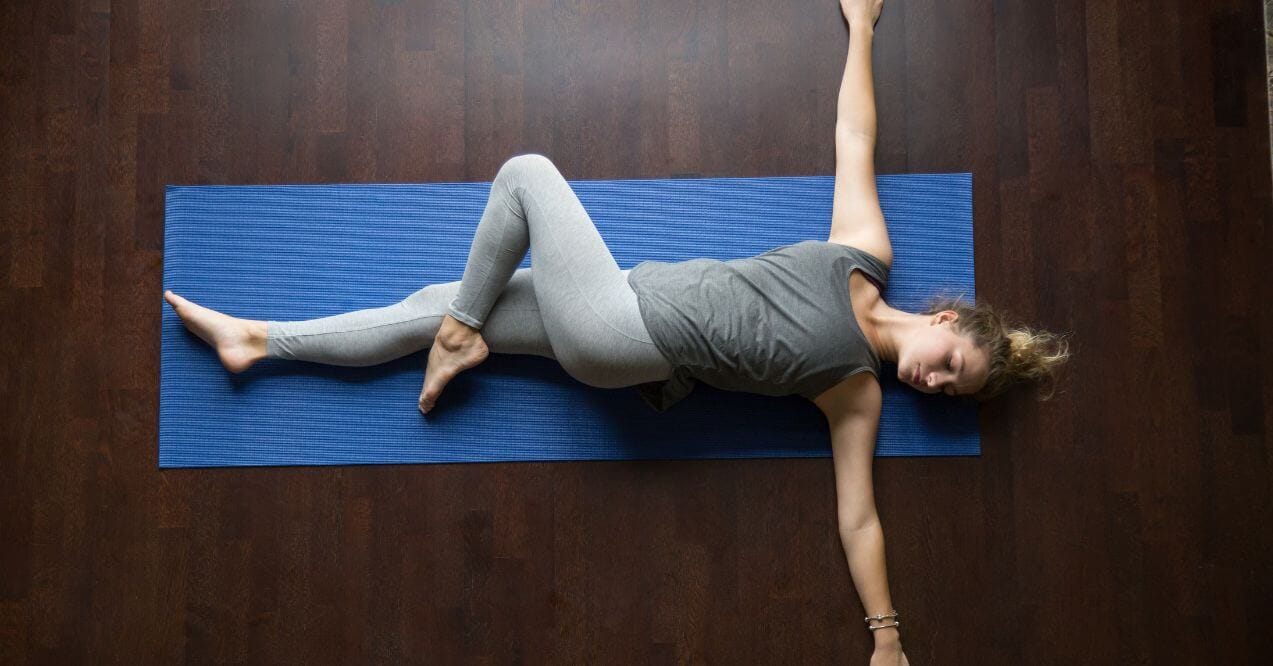
The Supine Twist is a simple yet powerful pose that gently stretches the spine and relieves tension.
How to perform:
- Lie on your back with your knees bent and feet flat on the floor.
- Extend your arms out to the sides, palms facing up.
- Bring both knees up toward your chest.
- Slowly lower your knees to the right, keeping your shoulders grounded.
- Hold the position for a few breaths, then bring your knees back to center.
- Repeat on the left side.
This somatic yoga pose helps release tension in the lower back and hips while improving spinal mobility and flexibility.
2. Cat/Cow
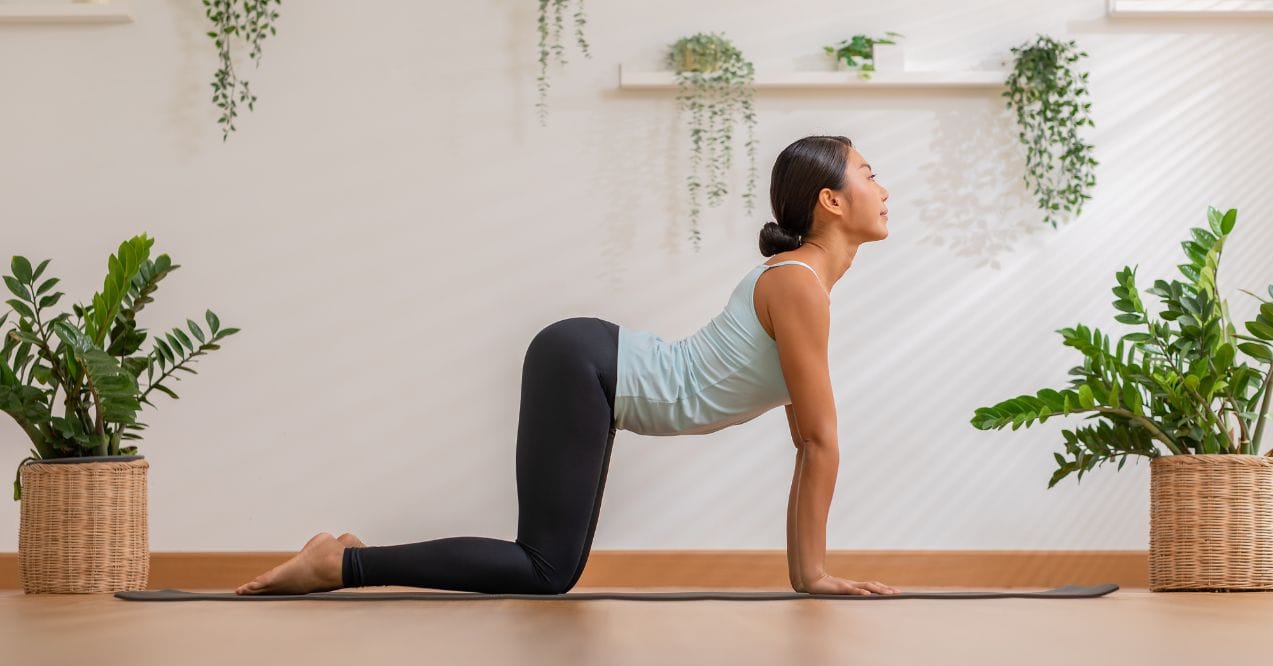
The Cat/Cow pose is one of the most well-known somatic yoga techniques, excellent for enhancing spinal flexibility and core strength.
How to perform:
- Start on your hands and knees in a tabletop position, with wrists aligned under shoulders and knees under hips.
- Inhale, arching your back and lifting your head and tailbone towards the ceiling (Cow pose).
- Exhale, rounding your spine and tucking your chin and tailbone (Cat pose).
- Move slowly between these two positions, syncing your breath with each movement.
This pose encourages fluid movement of the spine, improving flexibility and relieving tension in the back and neck.
3. Moving Bridge
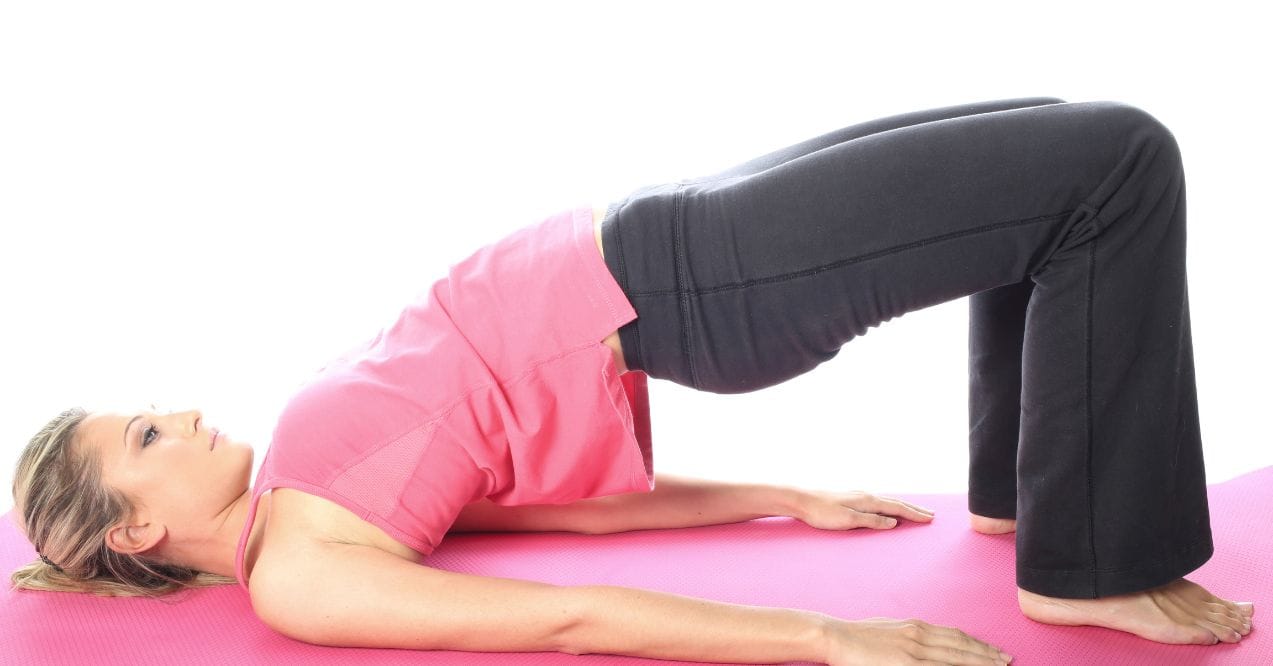
The Moving Bridge pose focuses on mindful movement of the spine and hips, making it a key element of somatic yoga techniques.
How to perform:
- Lie on your back with knees bent and feet hip-width apart, arms resting by your sides.
- Press your feet into the ground, lifting your hips off the mat while keeping your spine neutral.
- Slowly lower your hips back to the mat, vertebra by vertebra, paying attention to the movement of your spine.
- Repeat the movement several times, coordinating with your breath.
This pose strengthens the glutes and lower back while promoting flexibility and alignment in the spine.
4. Spinal Flex
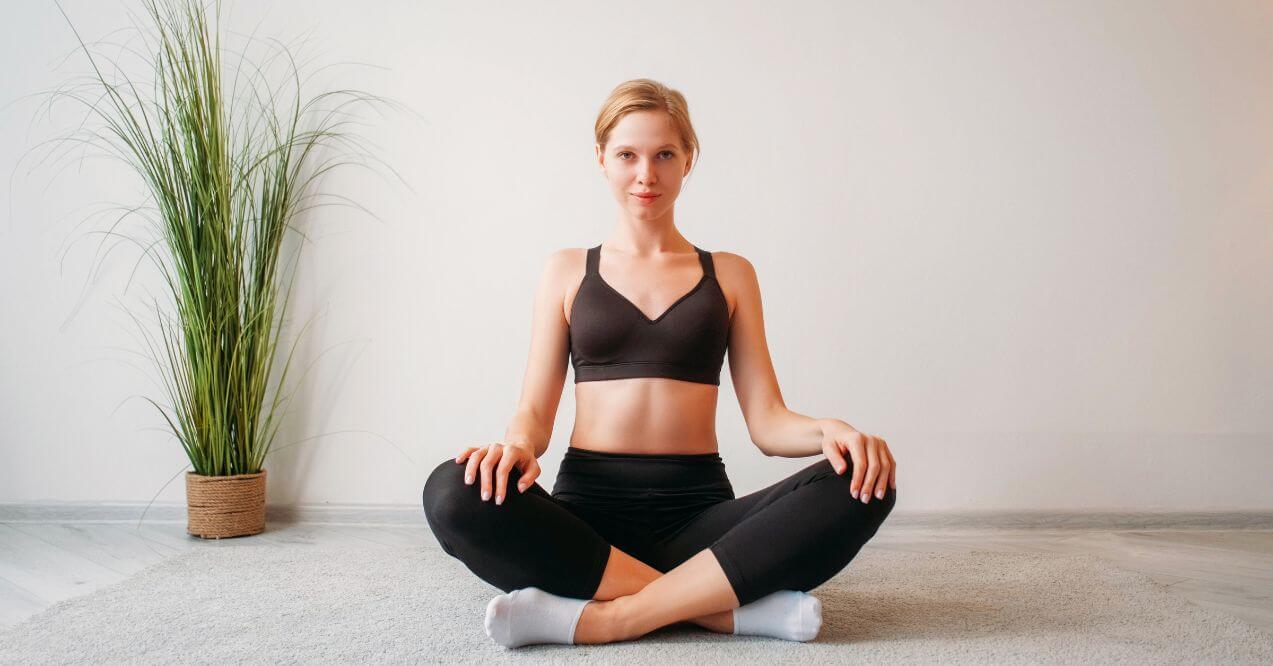
Spinal Flex is a gentle movement that helps release tension along the spine and improves mobility.
How to perform:
- Sit cross-legged or on your knees with your hands resting on your knees.
- Inhale as you arch your back forward, bringing your chest up and shoulders back.
- Exhale as you round your spine, tucking your chin toward your chest.
- Continue this movement slowly, focusing on the sensations in your spine.
- For a more advanced variation, perform the pose while seated on a chair or standing.
This somatic yoga pose helps increase spinal flexibility, strengthens core muscles, and enhances overall body awareness.
Somatic Yoga for Trauma
Somatic yoga for trauma offers a gentle and effective approach to supporting emotional and physical recovery. Trauma often causes the body to store tension and stress, leading to discomfort and disconnection from bodily sensations. Somatic yoga helps individuals reconnect with their bodies through slow, mindful movements, allowing them to release stored tension and build a sense of safety within their physical form.
By focusing on small, controlled movements and deep breathing, somatic yoga encourages the nervous system to regulate itself, promoting calmness and reducing anxiety. This practice creates a safe space for trauma survivors to regain control over their body’s responses, helping to alleviate the lingering effects of trauma.
Over time, this form of yoga supports emotional resilience, promotes relaxation, and encourages a deeper connection between mind and body. Somatic yoga for trauma can be an empowering tool for individuals seeking to rebuild a sense of peace and well-being.
Key Takeaways
What is somatic yoga? It is a mindful practice that blends body awareness with the gentle movements of yoga to enhance physical and mental well-being. By focusing on slow, intentional movements, somatic yoga helps improve body awareness, reduce muscle tension, and support nervous system function. This practice is beneficial for people looking to increase flexibility, improve movement patterns, and manage stress.
In addition to its physical benefits, somatic yoga can support emotional healing, especially for those recovering from trauma. Though not a high-intensity workout, somatic yoga for weight loss can be effective by promoting mindful movement, reducing stress, and fostering a healthy lifestyle. Overall, somatic yoga provides a holistic approach to both physical and emotional well-being.
Yoga focuses on postures, breathwork, and flexibility, while somatic yoga emphasizes slow, mindful movements to increase body awareness and release tension. Somatic yoga retrains the brain’s communication with muscles, promoting more intentional and conscious movement patterns.
Somatic yoga does not heal trauma but can support trauma recovery by promoting body awareness, releasing tension, and regulating the nervous system. It provides a safe space for individuals to reconnect with their bodies and enhance emotional resilience.
The strongest form of yoga is Power Yoga, a vigorous practice that combines strength, flexibility, and endurance. It focuses on fast-paced movements and challenging postures, making it ideal for building physical strength and cardiovascular fitness.
Sign up for our Healthy Living newsletter!
Advertisement. This site offers health, wellness, fitness and nutritional information and is designed for educational purposes only. You should not rely on this information as a substitute for, nor does it replace, professional medical advice, diagnosis, or treatment. If you have any concerns or questions about your health, you should always consult with a physician or other health-care professional. Do not disregard, avoid or delay obtaining medical or health related advice from your health-care professional because of something you may have read on this site. The use of any information provided on this site is solely at your own risk.










